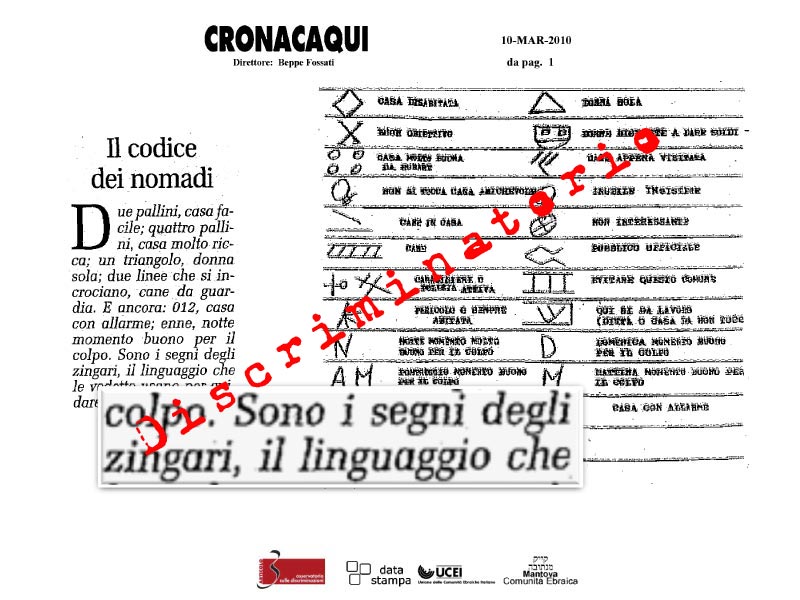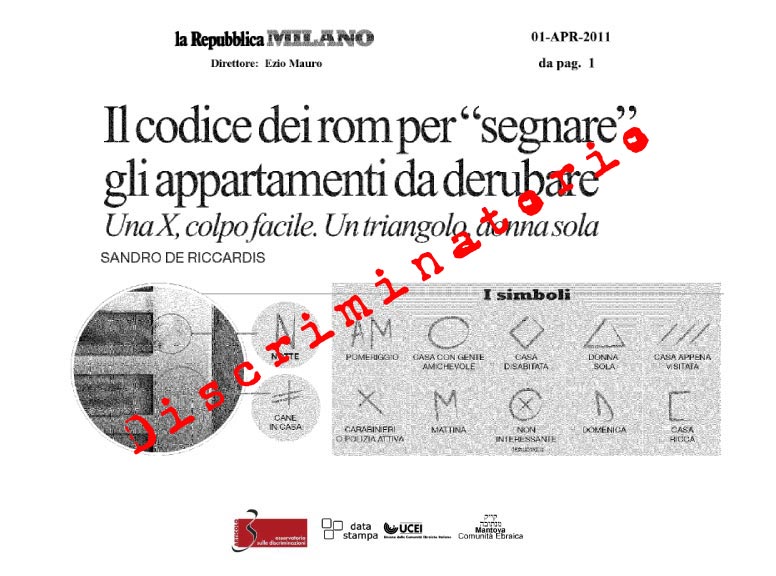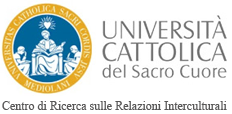Urban legends
|
|
Veritable urban legends are being spread about Roma people.
According to one of these legends, the Roma and Sinti people have developed a code of signals to communicate the circumstances of their potential victims between themselves. As A. Dal Lago noted in his book Non-persone. L'esclusione dei migranti in una società globale ['”Non-persons.” Migrants' exclusion in a global society], (Feltrinelli, Milan, 1999, p. 66), there is actually no proof that Roma people really use such a code. This is more likely to be an adaptation of the signs beggars used in the past when drawing “maps” for their daily panhandling, a practice that disappeared in Italy from the early 1960s onwards. According to M. Mannoia, "those alleged maps function as a prosaic device and play an important role as they turn social concern into a tangible threat, hence into a nationwide policy issue." In fact, the inexistent maps become the "scientific" proof of criminal practices used by Roma and Sinti people.
|
| |

(Cronaca qui, March 10, 2010)
|

(La Repubblica,
April 1, 2011)
|
|
|
|
Italy: The Trenitalia incident
|
 |
In May 2010 the Lazio Regional Office of Trenitalia, part of the National Railways Group, disseminated a form to its staff to monitor how many passengers used the Salone station. The form contained the following note: "Should you notice any Roma passengers, please also mention this in the right-hand part of the box."
Click on Preview to enlarge the picture.
|
| |
Politics
Hostility to Roma and Sinti people is often played upon to curry favor with the electorate.
• OsservAzione "The 'latest' public enemy: Romanian Roma in Italy. The case studies of Milan, Bologna, Rome and Naples", Florence, January 21, 2008.
• OsservAzione "Political participation and media representation of Roma and Sinti in Italy. The case studies of Bolzano-Bolzen, Mantua, Milan and Rome", Florence, July 16, 2006. The research and writing for the report was funded by the OSCE/ODIHR and CPRSI.
|
|






